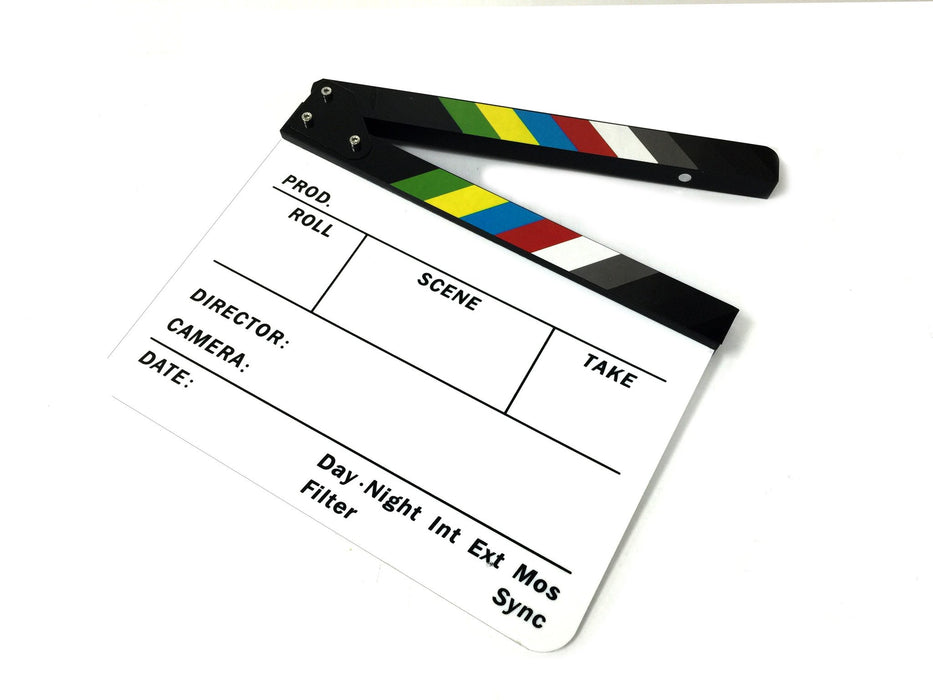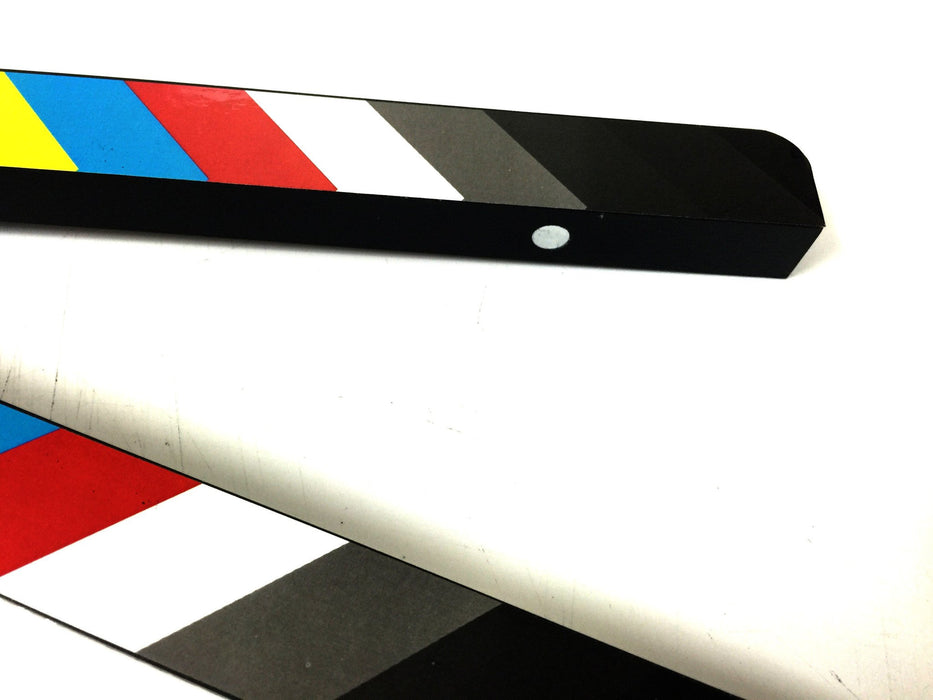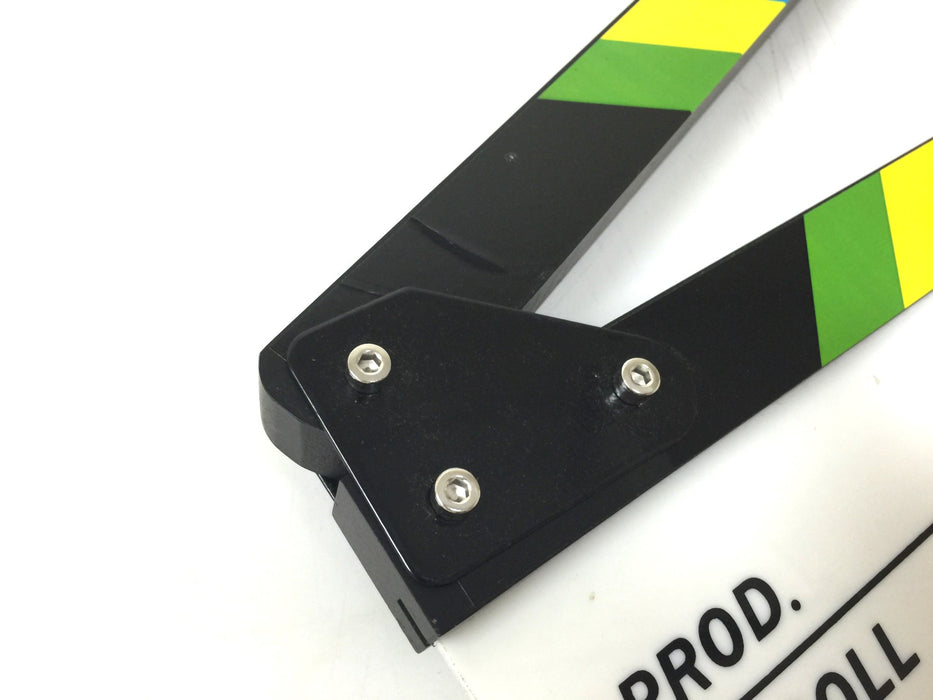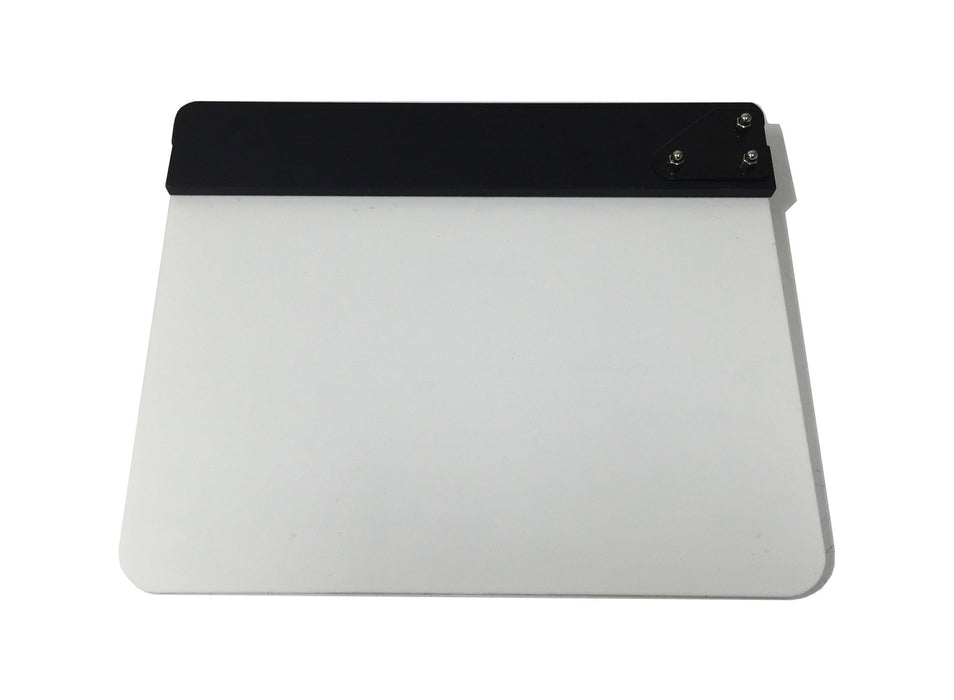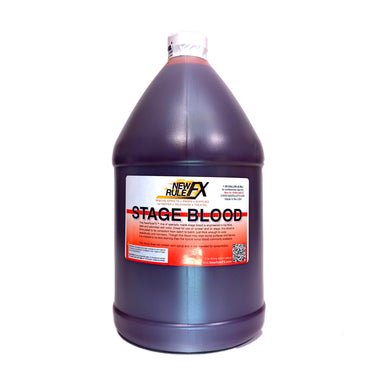Professional Dry-Erase Production Slate Clapperboard Marker
A clapperboard is a device used in filmmaking and video production to assist in the synchronizing of picture and sound, and to designate and mark particular scenes or takes recorded during a production. The sharp "clap" noise that the clapperboard makes can be identified easily on the audio track, and the shutting of the clapstick can be identified easily on the separate visual track. The two tracks can then be precisely synchronised by matching the sound and movement.
Other names for the clapperboard include clapper, clapboard, slate, slate board, slapperboard, sync slate, time slate, sticks, board, and sound marker. This clapperboard is made from durable acrylic and features color sticks for aid in quick color adjustment. The sticks have magnetic inserts to insure a smart "clack" and will also keep them from opening when not in use. There are blank sections that can be written on with wet or dry erase markers signifying the Take, Scene, Roll, Production, Director, Camera, Date Night, Int/Ext Mos Filter and Sync. Slate is compatible with dry-Erase brand markers and water based markers. **Includes mini-dry erase marker and eraser. Rear of slate is blank.
Clapperboard Categories:
• Prod - This one’s pretty self explanatory and is reserved for the Title or Name of the production.
• Roll - In the golden days of Hollywood, scenes were shot on actual rolls of film. The size of the celluloid film, along with the speed of filming (aka frame rate), would dicate the approximate shooting length of each film roll. A typical roll of 35mm movie film that was shot at 24 frames per second would produce approximately 11 minutes of footage, so changing rolls was a frequent part of the filmmaking process. Keeping track of all those rolls of film is most important and the script supervisor and camera assistants would usually note that information on their logs to help editors organize and locate all scenes and takes. Nowadays, a “roll” can refer to a specific digital media card, hard disk drive, or can even specify which smartphone is recording the footage!
• Scene - This the number of a scene which usually matches up to the shooting script. A scene commonly starts with a number and has multiple angles (aka coverage) of the scene are shot, a letter designation is added to indicate the corresponding cameras or angeles. Simply put, your first scene is marked as “1”. When covering the scene from different angles, filmed seperately in different short sections, your primary camera angle is ‘a’, secondary ‘b’, tertiary ‘c’, etc. So the markings in this category would be scene ‘1a’, scene ‘1b’ and scene ‘1c’.
• Take - This category corresponds to the number of times the very same shot is recorded. As not all takes of the scene will be good enough to even bothering reviewing, noting each take becomes most helpful when the film reaches the editing room. Directors often task someone on set with the duty of tracking the best and worst takes in a log. This guarantees that “Good Takes” - usually indicated with a circle or a star on the log - are quickly found so the post production process can move along quickly. Takes are usually a consecutive number (Take 1, Take 2, Take 3 ..)
• Director - That’s pretty easy, you list the name of the Director here!
• Cameraman - This is the name of the Camera Operator, Director of Photography, or Cinematographer.
• Date - Pretty sure you this one.
• Day night - Believe it or not, many older films shot “night scenes” in broad daylight! So this was an important designation when shooting film long ago. Noting the day or night on the slate served to help the technicians properly developing techniques, techs in the lab could create a mostly convincing night effect. Though this category is not as important now, it’s still there, so circle the correct one for fun!
• Filter - A quick list of the filters placed in front of the lens is typically written here, again as reference for the folks in the lab so they are sure to process the film appropriately
Size: 11.75" x 9.75" x .75"
Weight: 13.5 oz


